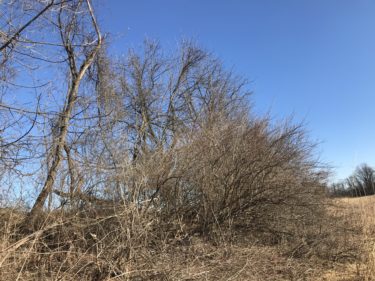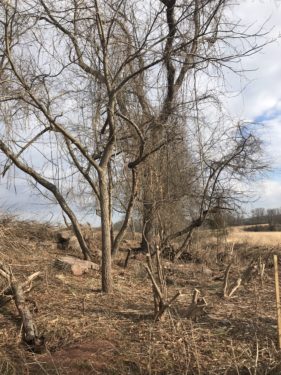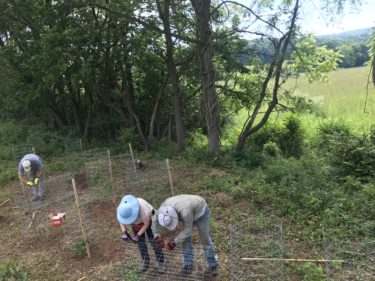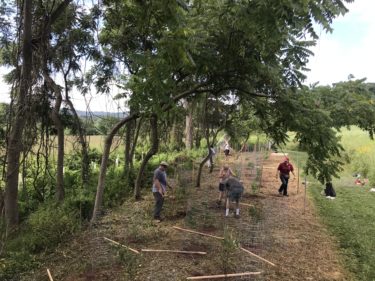bird and beetle buffet at Green Hills.
Green Hills Preserve Manager Erin Smith, along with preserve assistants and volunteers, has been working to create a 600-foot hedgerow near the parking lot over the past several years.

Invasive bush honeysuckle thicket before clearing
Photo: Erin Smith
When they began, there was an existing hedge 80-feet-wide of invasive bush honeysuckle along a single row of walnut trees. So they began by first removing the honeysuckle with chainsaws, chipping the debris along the way. However, that left the roots, which often re-sprout, so they are now removing those with a tractor and hand tools. Any remaining bits of the roots get a treatment of herbicide.

Clearing of invasives is underway.
Photo: Erin Smith
In the summer of 2020, Erin and her team planted about 200 feet of the hedgerow with native shrub species like flowering dogwood, magnolia, witch-hazel, elderberry, and arrowwood viburnum. These woody plants offer wide flowers, which are more accessible for beetles.
Says Erin, “Many beneficial beetle species are a bit clumsy in their pollination efforts, so they appreciate wider flowers that are easier for them to navigate.”

Volunteers planting new shrubs and trees, and placing protective caging around them to prevent deer damage.
Photo: Erin Smith
She adds, “There are some big rocks in the hedgerow that people can sit on and over time we want to put a couple benches in the row so people can use it as a kind of ‘living bird blind’ to gaze over the fields behind.”
Removing old hedgerows, like the honeysuckle thicket that once dominated this space at Green Hills, can be controversial. Songbirds favor mature hedgerows, using the tangle of branches for nesting and foraging for fruit and seeds. So, Erin knew taking out the old vegetation without a replacement wasn’t an option.

The walnut trees in the old hedgerow get new, native species as companions.
Photo: Erin Smith
“The new-and-improved hedgerow offers flowers for beetles and other pollinators, valuable habitat for birds, and shady seating for our visitors,” shared Erin. “And the plants we’ve installed will even thrive near black walnut trees, which excrete a chemical compound from their roots that some species don’t tolerate well.”
Stop by Green Hills to see for yourself how this new “beetle and bird buffet” hedgerow is maturing! The preserve is open daily, dawn to dusk, and is always free of charge for all.
